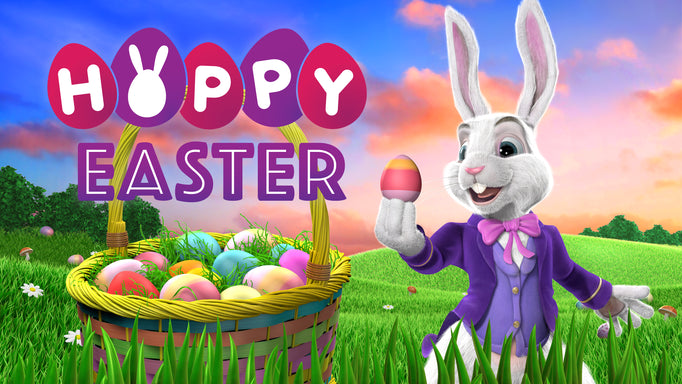You've got your Easter Baskets stuffed and the eggs hidden. Maybe Hoppy from Hoppy Easter is set to make an appearance. But, aside from eggs, what other decorating traditions bloomed at Eastertime?
Florence Kingsland's book, The Book of Indoor and Outdoor Games, now more than 100 years old, describes the Easter tradition of "Butterfly Lunches."
"young girls determined "flying flowers" (butterflies) should be the prominent features of their little fete. In the centre of the table, above a low, round basket filled with growing hyacinths—white, pink, lilac, yellow—eight or ten little butterflies were apparently hovering over or lightly poised on the blossoms. Made of Japanese paper, some white, some yellow, and about two inches across the outspread wings, they represented the most common species found in this country and usually seen fluttering in pairs—"twin souls"—in our lanes and byways. Attached to tiny spiral wires concealed among the flowers, they had the tremulous motion that simulated life. A wide, pale-yellow satin ribbon was tied around the basket.
The candle-shades were of white crimped paper, with large yellow butterflies surrounding them; the wings, just meeting at the tips, were marked with fantastic designs, and the little nervures (yes, that's a real word) slightly traced like the veinings of a leaf.”
Kingsland suggested a butterfly-making contest where budding artists apply paint on one half of a piece of folded paper, then pressing the halves together, duplicate the profile of the butterfly and blend the colors. (A less messy version can be found, here.)
She also records ideas for overall decor. While we still "deck the halls with boughs of holly," a century ago, they also decked the Easter halls with thin branches from fruit trees. These were put in water so their flowers would bloom early in the warm atmosphere of the home and announce the coming of Spring.
For more formal dinners, a mass of Easter Lilies was arranged in the center of the table with a single lily at each place. Each of these single Easter Lilies, “held in its deep cup a bunch of Lilies of the Valley—like the "bouquet-holders" of our grandmother's day.”
NOTE: and this is important: while it is okay to touch Lilies of the Valley, all parts of them are HIGHLY poisonous if eaten. Therefore, this decor is NOT recommended for children. For more on edible flower substitutes, see What's Cooking America. Also on the table:
“At one end of the table, a vase held a bundle of dry twigs upon which a chrysalis or two hung like dried leaves. A similar vase at the other end held small apple-boughs covered thickly with their fair white blossoms, while tiny white and yellow butterflies perched upon or hovered above them on invisible wires. The cakes and bonbons were in the forms of eggs or flowers. At each place was a bonbonniere in the shape of ... hens, roosters, ducks, etc., and wee chicks for the children. On their backs were tied cards inscribed with barn-yard names, supposed to be appropriate to the recipients. 'Cock of the walk' was given to the head of the family, and 'Pride of the nest' to his gentle consort, 'Prize Bantam' to one of small stature, ... Upon the reverse side of the cards were written quotations appropriate to the day”
The menus for these fetes sound a bit strange to the modern reader, especially for the reliance on "creamed" items: cream of celery soup, creamed sweetbreads, cream cheese on a lettuce salad, and ice cream. Wherever possible, the creamed items were shaped into eggs.

Happy Easter!






